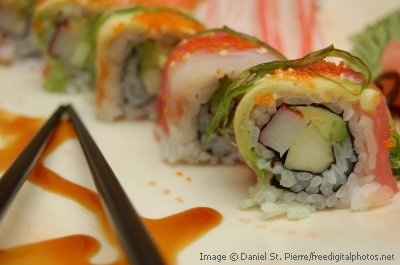Learning How To Eat Healthy
Food Digestion Process
In order to learn how to eat healthy we first need to undestand how food digestion process works.
What Happens When We Eat?
If you ask someone what he or she eats every day, the most frequent answer is:
“I eat pretty healthy!”
Our traditional and most common menu usually consist of coffee with a toast with butter for breakfast, a sandwich with a side for lunch and usually a three course dinner including dessert and a coffee. You can also add a glass or two of wine and an appetizer into the picture if they are eating out.
But can this eating pattern be considered healthy?
Choosing what to eat and how to eat healthy is best done with some knowledge, so let’s learn a little bit about food digestion process.
Food Digestion Process

Digestion starts in the mouth, assisted by chewing but mainly by saliva, which contains certain digestive enzymes. This begins the digestion of complex carbohydrates such as whole bread, pasta or rice.
When the food gets in the stomach, it is acted on by gastric juices, whose composition varies according to the food ingested.
From the stomach it passes through the pylorus into the intestine where bile, along with other pancreatic juices, completes the digestive process. At this point the essential nutrients are absorbed into the blood and are carried to all internal organs of your body. Any unused material goes into the large intestine and is then eliminated. Fluids pass through the kidneys, where they are filtered and waste is then expelled.
I am not going to go into deep details of digestive processes, and the above quick overview should be enough for you to get an idea what happens with pretty much any type of the food after we put it in our mouth.
But it is a totally different story when we try and eat different types of food at the same time.
The reason for that are the different enzymes that process our food, which work great alone, but together can cause indigestion and other problems.
Incorrect and unhealthy food combinations risk delaying digestion times, thus impeding absorption of necessary nutrients.
Let’s take a look at typical dietary habits.
How Do We Usually Eat Our Dinner?
For instance, let’s take a nice plate of Italian pasta (complex carbohydrates). When it gets in our mouth it is attacked first by ptyalin in saliva and then by the gastric juices in the stomach, which proceed with digestion.
Note that we are talking about plain pasta without the meat sauce, because that would complicate matters as you will soon see.
After pasta let’s move on to the main course – beef stake. The proteins it contains have completely opposite digestive requirements to those of the pasta.
The stake is attacked in the mouth by pepsin and not ptyalin and in the stomach by hydrochloric acid, creating an acidic environment that suspends the carbohydrate processing of the pasta. Until the meat passes through, the pasta stays where it is and the digestive process slows down.
How to eat healthy - Food Combinations
As you can see, when you combine two or more foods together in one meal the digestion is getting complicated. And it gets even more so when we move onto the dessert. (simple sugars and carbs).
Sugars should go directly to the intestine to be absorbed at the gastric level, but since we already have other foods in the stomach and intestines they are stopped and begin fermenting.
Your digestive process is now completely out of order, but why not add a nice cup of coffee to the mix?
Coffee increases the already existing acidity level and masks the uncomfortable situation, your feeling of tiredness, sleepiness, and digestive difficulty, by giving the nervous system a small jolt.
***
The above example teaches us how to eat healthy and point out evident food combination errors in our regular eating patterns but how do we know what are the correct food combinations?
Check out my healthy eating guide to answer that question!
Related articles:
Healthy Diet Plan › Healthy Diet Plan › How to Eat Healthy








